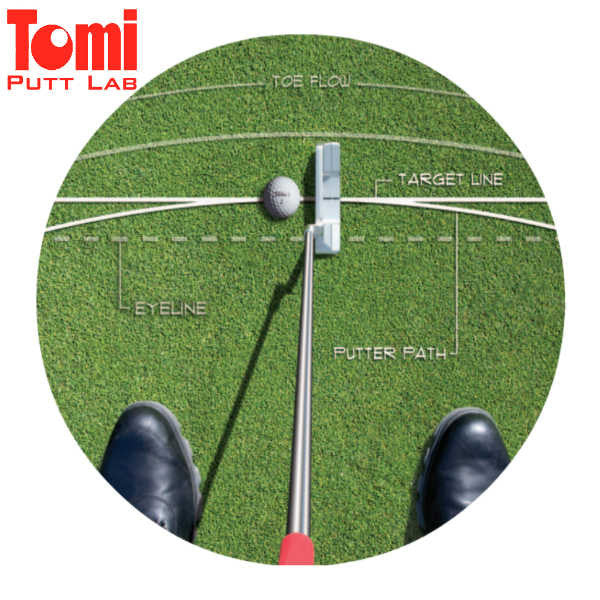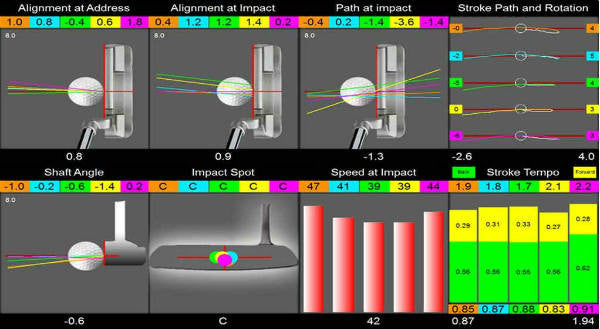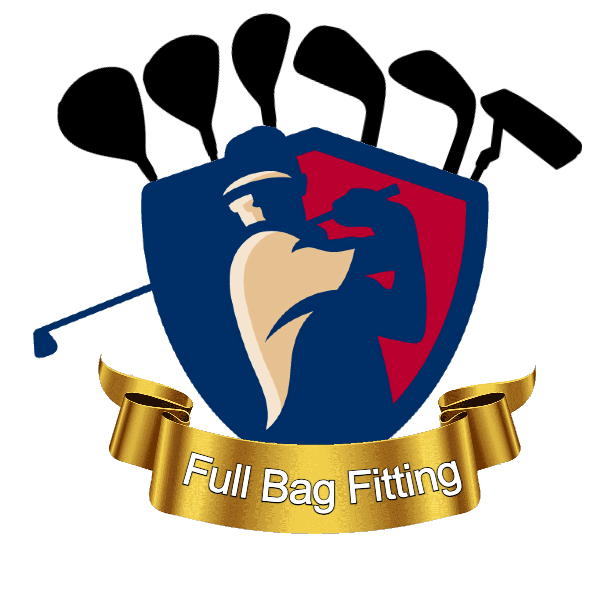Customer Reviews
Putter Fitting
$150.00 Book an appointment using our online system and swing by for a fit to perfection.
ABOUT PUTTER FITTINGS
It’s the only club you use on every hole! The putter fitting is the most overlooked fitting, yet the most important. Keep track of your putts on 18-holes, if you have 30+ putts in a round, you can improve your score by simply putting better. As glorious as it may look, you do not not make par with a long and straight drive… You make par (or birdie) with a good putt. A putter face +/-1º will miss a putt at 7 feet…think about that… Once you’re fit to a putter, a golfer can focus more on reading greens and not thinking “was that me, or, did I read it wrong?”.
Player Benefit: A putter that is custom fitted for length, lie angle, loft, weight, toe hang (or toe flow), offset, head shape and style, putter material and grip size will consistently roll the ball straighter and with less tendency to skid or bounce off the intended line.
Experience a Putter Fitting by Spargo Golf
- Brief Interview to determine the golfers’ goals and desires.
- The golfers current putter is first blueprinted and analyzed on the T.O.M.I. Pro system, measuring 10 parameters of a putting stroke inside our Putting Studio.
- We begin testing, based upon T.O.M.I. analytics of their putting stroke, with various putters determining putter specifications that optimize the golfer in both consistency and performance. Variables tested are toe hang, offset, head shape, loft, lie, weight, grip and putter construct materials. This part of the putter fitting is the most time consuming.
- Putters are tested with Balance Certified® weights, commonly used to increase consistency of impact and stroke path.
- Final determination of the golfers OPTIMAL putter is given. Recommendations are made to either retro-fit the golfers current putter, or guide the purchase of a new putter.
Putter Fitting - Explained In Depth
Being able to see what a putting stroke is actually doing (and not what you think it’s doing) guides the fitter and golfer to the best combination of variable specs (see below) to make a golfer the most consistent with their tendencies. Through use of the T.O.M.I. software, we can prove definitive results.
T.O.M.I. (The Optimal Motion Instructor) putting analysis software measures and records the following parameters:
- Alignment at Address
- Alignment at Impact
- Stroke Path
- Rotation (Back Stroke)
- Rotation (Forward Stroke)
- Shaft Angle at Impact
- Impact Grouping on Putter Face
- Head Speed at Impact
- Stroke Length (in time)
- Stroke Tempo
Putter Variables Tested During Fitting:
- Length
- Lie
- Loft
- Club-Head Type
- Neck / Toe Hang
- Putter construct materials (Carbon Steel, Stainless Steel, Aluminum, Multi-Material)
- Head Weight
- Counter Balance Weight (Balance Certified®)
PUTTER LENGTH
We start each fitting determining Length first. We do not measure wrist-to-floor to determine length as that method is extremely outdated, we prefer to fit to golfers’ dynamic swing, rather than getting static measurements. Length is the most important to get right, allowing the golfer to approach the ball the way their body is intends. Too long of a length, the golfer will be “shrugged” and easy to manipulate the putter head. Too short of a putter, the golfer will be hunched over and probably topping the ball (hitting low of putter face) for undesired distance control problems. The goal is to find a length that allows the golfer to be comfortable at address, short enough to control the putter head, but long enough to ensure a solid stroke thru the ball.
PUTTER LIE ANGLE
Simply put, lie angle is making sure the putter head sits flush and flat to the ground, without the toe up in the air or digging in the ground. A putter with the toe in the air can result in miss putts left (right-handed golfer), or the opposite, a putter with the toe in the ground can result in miss putts right. Lie angle is imperative to hitting the ball on the center of the putter face, which helps with aim and distance control.
PUTTER LOFT
Loft of a putter is to make sure the ball rolls true. Too much loft, the ball will launch off the ground with backspin, will skip off your target line and miss the putt. Too little loft, the ball will get stuck in the ground, will bounce and hop off your target line and miss the putt. Based on the players needs, green speeds are considered for proper loft. Faster greens may require less loft, while slow greens more loft. Our fitting is performed in our Putter Fitting Studio that plays to approximately 11 on the stimp-meter.
PUTTER HEAD SHAPES
Certain head shapes are designed for specific toe-hand (or toe-flow). Face Balanced putters are normally larger mallets, with alignment aids on top to help the golfer line up the putt. More toe hang are normally smaller blade design putters, commonly with just a simple line or perhaps no markings at all. The balance here is to find a putter that not only is designed to work with the golfers stroke type (straight or arc stroke) but also is appealing to the golers eye. This can be the trickiest part of the fitting. We would never fit you into a putter that you don’t like the look of.
PUTTER TOE HANG
If you rest your putter on the table, with the head hanging off the edge, you’ll notice that the putter has a natural resting position as to how the putter head balances. A player like Phil Mickelson putts with a very strong arc, thus uses a full toe hang putter to match his stroke. A player like Adam Scott is a typical “straight back, straight through” putter, he uses a face-balanced putter to match his stroke. A putters’ natural resting place could be any of the following:
PUTTER OFFSET
Putter offset is how much the putter shaft is in front of or behind in relation to the clubface of the putter. Offset can help a golfer align and square up the putter through impact.
PUTTER CONSTRUCTION MATERIALS
Putters are available in different material, which allow for a different feel at impact, or even sound that might appeal the golfer:
- Carbon Steel
- Stainless Steel
- Aluminum
In addition to the materials used to produce the putter, putter face inserts and milling can also change the properties of the metals even further. Deep milling on the putter face will make a putter feel softer with a lower-acoustic or muted sound at impact. A smooth or polished texture on the putter face will make a putter feel firmer with a higher-pitch sound at impact. These are different offerings to a golfer to help them feel more comfortable with a putter.
PUTTER WEIGHTING
Weighting in a putter splits into two categories, head weight and counterweight.
Head weight in putters vary from 350 grams to 375 grams. It affect players squaring up the putter face at impact. Normally, head weight can be fit to the green speed a golfer plays on. Heavier putters on fast greens and lighter putters on slow greens.
“The equation for kinetic energy is expressed by “one half the mass multiplied by the square of the velocity,” E=.5MV^2, which shows that the velocity of the stroke has a greater impact on energy than the mass of a putter.”
Counterweight adds weight inside the grip, counterweighting the head is a great way to help a golfer gain control. Where most players are concerned with adding weight to the putter head (we all know someone with layers of lead tape on their putter), rather adding weight inside your grip puts more weight in your hands and becomes difficult to manipulate the putter head as much.
PUTTER GRIP STYLE / SIZE
Comfort, comfort, comfort… You may be midsize grips on your irons and woods, but it doesn’t mean your midsize on your putter too. Finding the correct size is about a golfers grip pressure, or how tight they hold the putter. The goal is to find a grip size that allows the golfer to have the proper grip pressure. Texture is a personal preference, there is no texture that exists in the world that will help you make putts, only a texture that makes you feel comfortable with what’s in your hands. Lastly, shape, is another variable off comfort. If you like the shape of a grip, you will putt well.. If you don’t like the shape of the grip, you won’t putt well. There is no scientific data that shows you should be putting with a specific shape and size grip. Don't over think this one..
Related Items
Sign up to get the latest on sales, new releases and more …
Questions? Call Us at the shop! 401-946-4653
© 2026 Spargo Golf.
Custom Clubfitting Center
Ecommerce Software by Shopify










